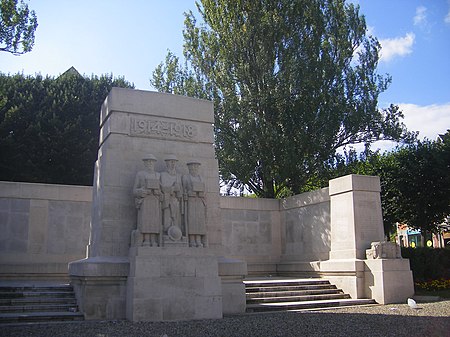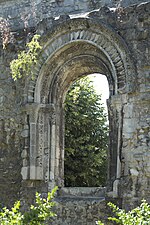Soissons Memorial

The Soissons Memorial is a World War I memorial located in the town of Soissons, in the Aisne département of France. The memorial lists 3,887 names of British soldiers with no known grave who were killed in the area from May to August 1918 during the German spring offensive. The battles fought by those commemorated here include the Third Battle of the Aisne and the Second Battle of the Marne.This is a free-standing memorial (one without an associated cemetery) constructed in Portland stone. It was designed by G. H. Holt and V. O. Rees with sculpture by Eric Kennington. The memorial was unveiled on 22 July 1928 by Sir Alexander Hamilton-Gordon. Hamilton-Gordon was a general in World War I, commanding IX Corps from 1916 onwards, and was commander of this corps during the Third Battle of the Aisne, which is commemorated here.
Excerpt from the Wikipedia article Soissons Memorial (License: CC BY-SA 3.0, Authors, Images).Soissons Memorial
Rue du Pot d'Étain, Soissons
Geographical coordinates (GPS) Address Nearby Places Show on map
Geographical coordinates (GPS)
| Latitude | Longitude |
|---|---|
| N 49.3812 ° | E 3.3289388888889 ° |
Address
Soissons Memorial
Rue du Pot d'Étain
02200 Soissons
Hauts-de-France, France
Open on Google Maps








